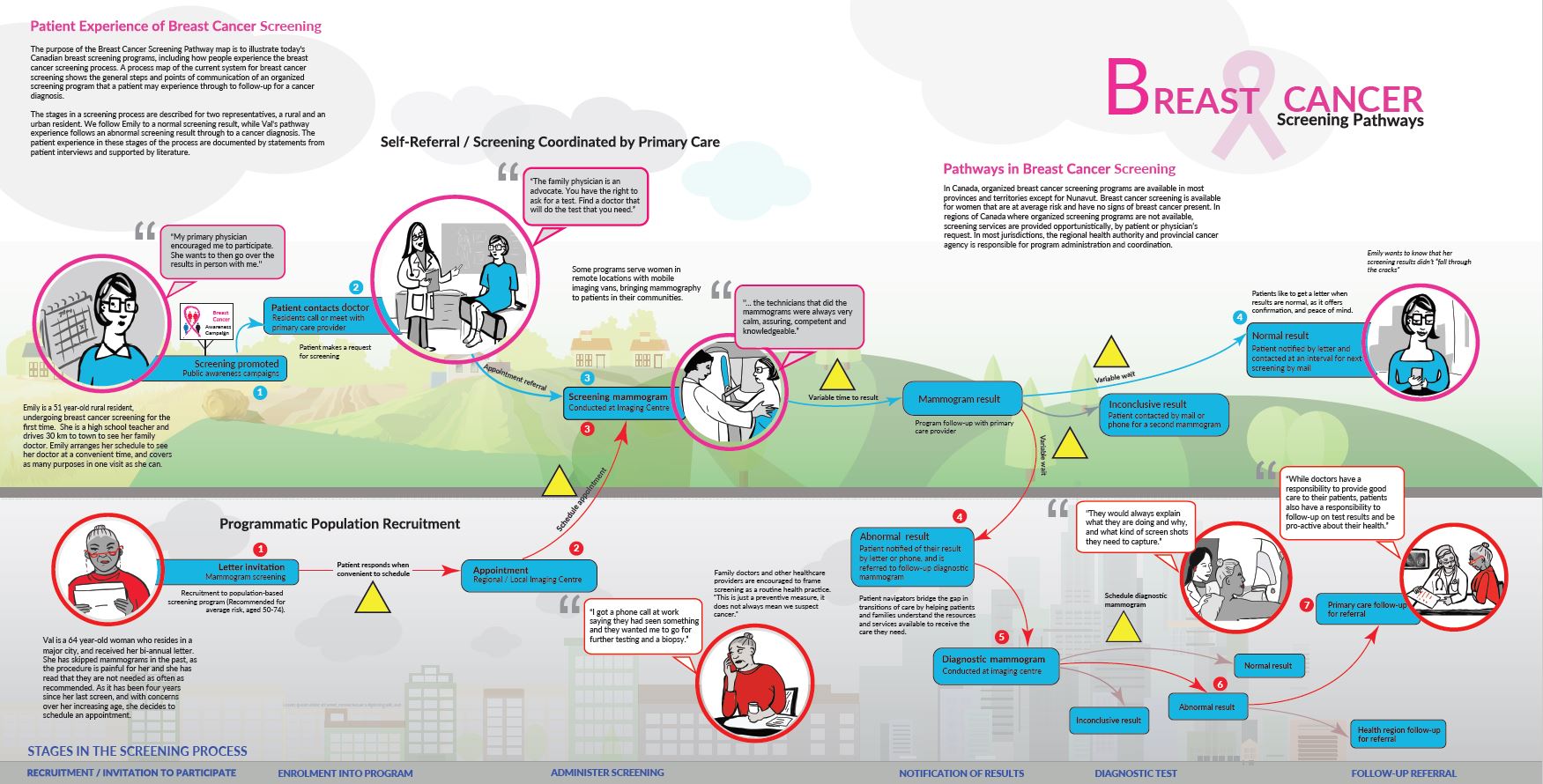Patient synthesis map about breast cancer screening
January 15, 2020
Review a map that shows the stages of the breast cancer screening process from both a rural resident’s and an urban resident’s perspective
This map of the breast cancer screening process shows the general steps and points of communication that a patient may experience through an organized screening program, including follow-up for a cancer diagnosis. The map also defines terms, and includes challenges and barriers.

It shows Emily’s pathway to a normal screening result, and Val’s pathway from an abnormal screening result through to a cancer diagnosis.
In Canada, all provinces and territories, except Nunavut, offer organized breast cancer screening programs. Breast cancer screening is available for women who are at average risk for breast cancer and show no signs of it being present. Where screening programs aren’t available, a doctor or patient may ask for screening services.
Deaths from breast cancer are reduced by mammography for women at average risk, who are 50 to 74 years in age compared with similar women aged 40 to 49 years. Over-diagnosis and unnecessary biopsies and their resulting harms may be greater for younger rather than for older women.
How to empower patients
This synthesis map also shares the factors that empower patients:
- Co-ordinating services and communication between levels of care, like primary and specialized care, can improve continuity for patients. Doing so also offers a seamless experience from screening through to diagnosis and treatment.
- Primary care plays an important role in making screening decisions, and can encourage patients to ask questions as well as take control over their screening. It’s helpful when a family physician communicates a sense of urgency.
- Multiple touchpoints with providers lead to more positive health outcomes.
- Screening programs can proactively remind patients and help build health literacy through direct communication by mail, phone and in person.
- Patient navigators can assist patients between the screening process’ stages.
- Social support from family, relatives and friends helps sustain a positive attitude toward cancer diagnosis.
Downloadable content
File size 5 MB
